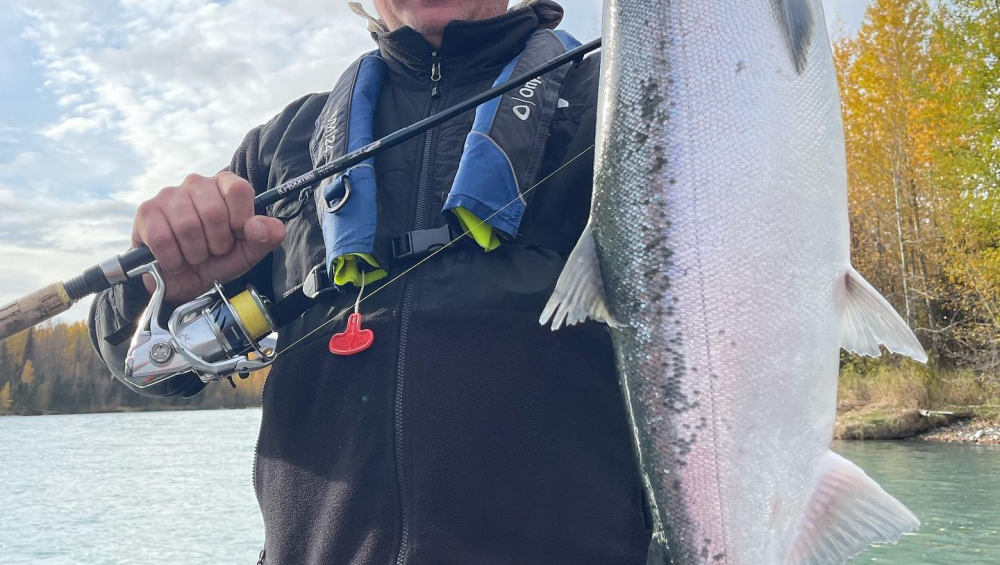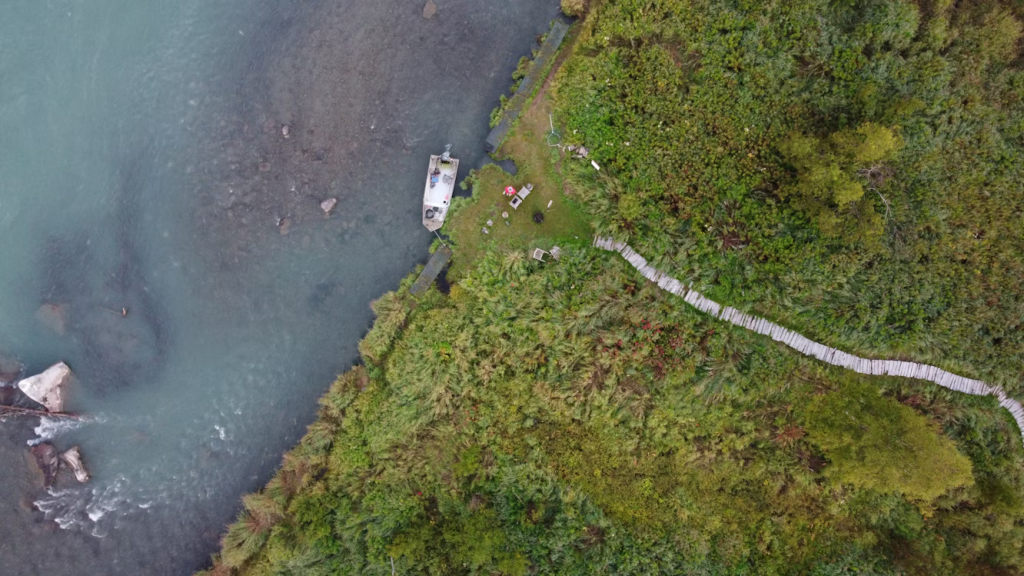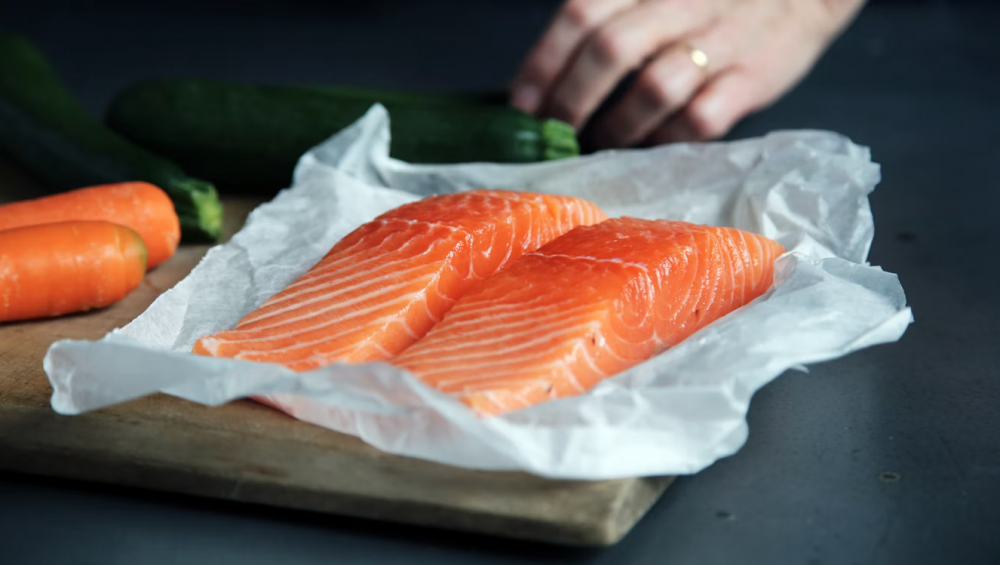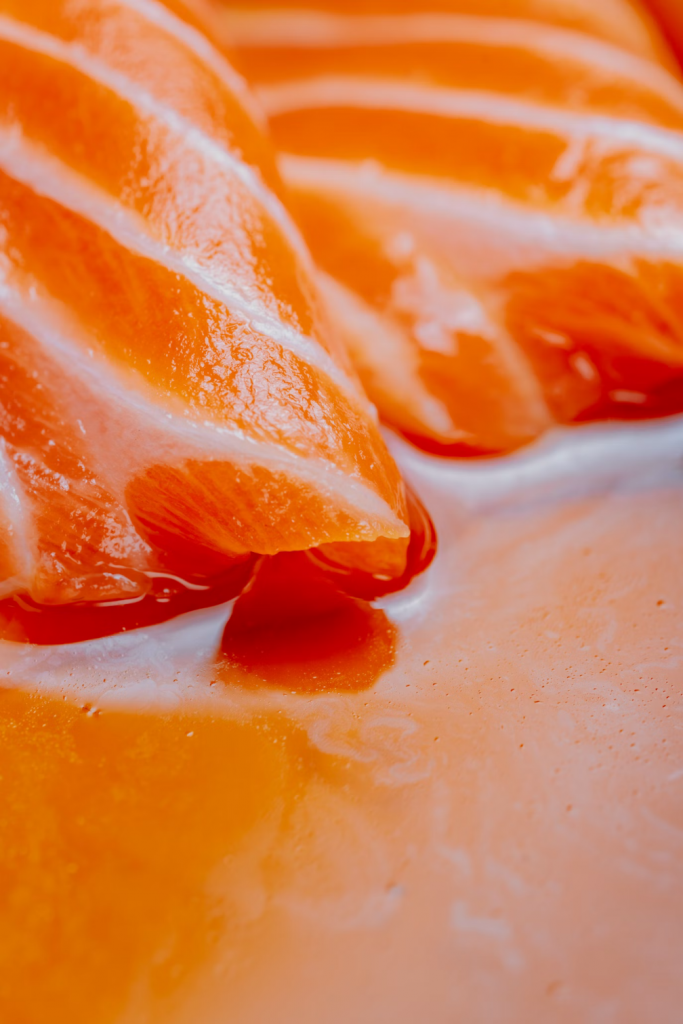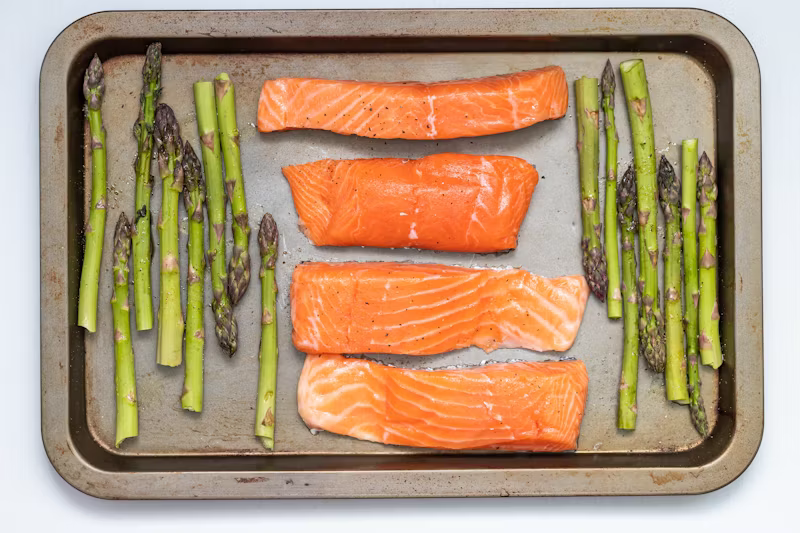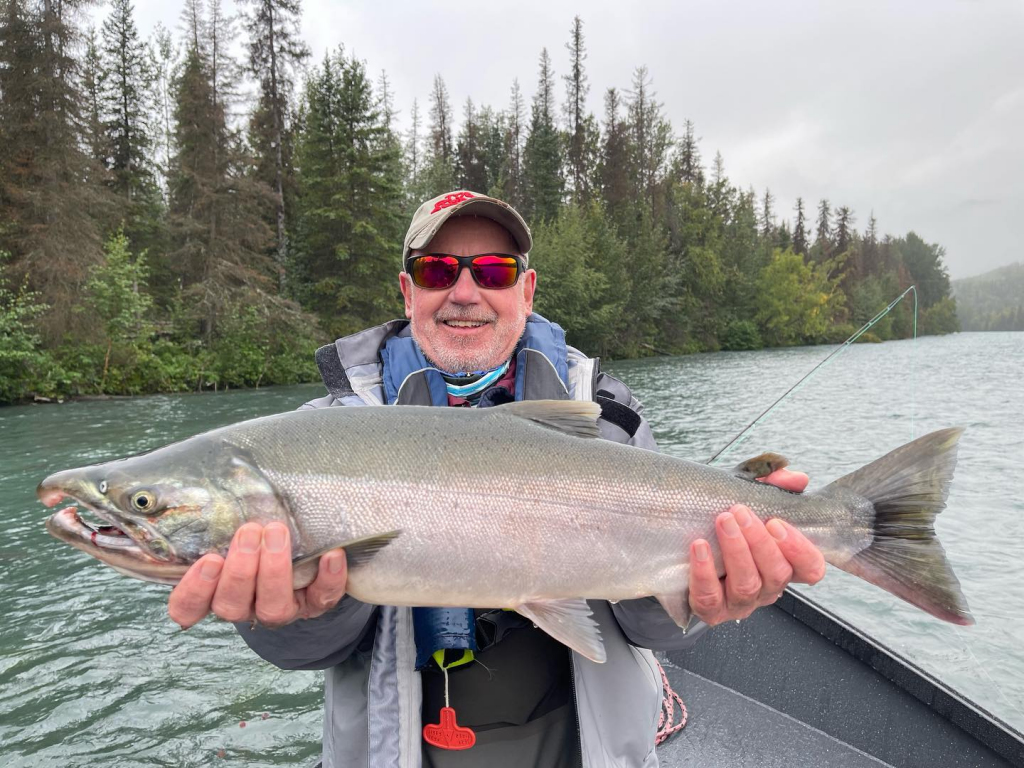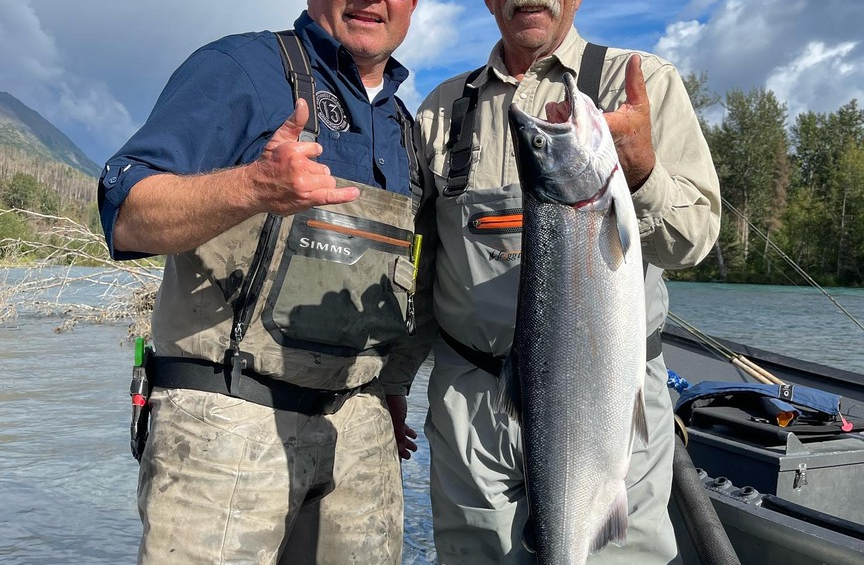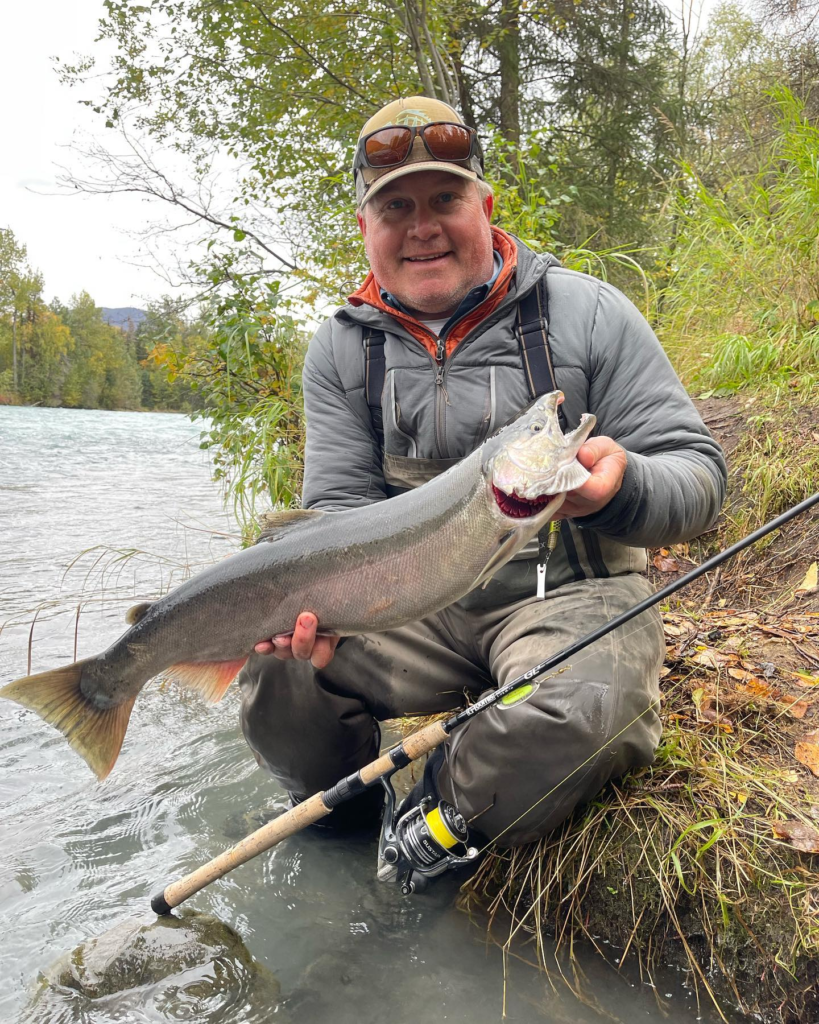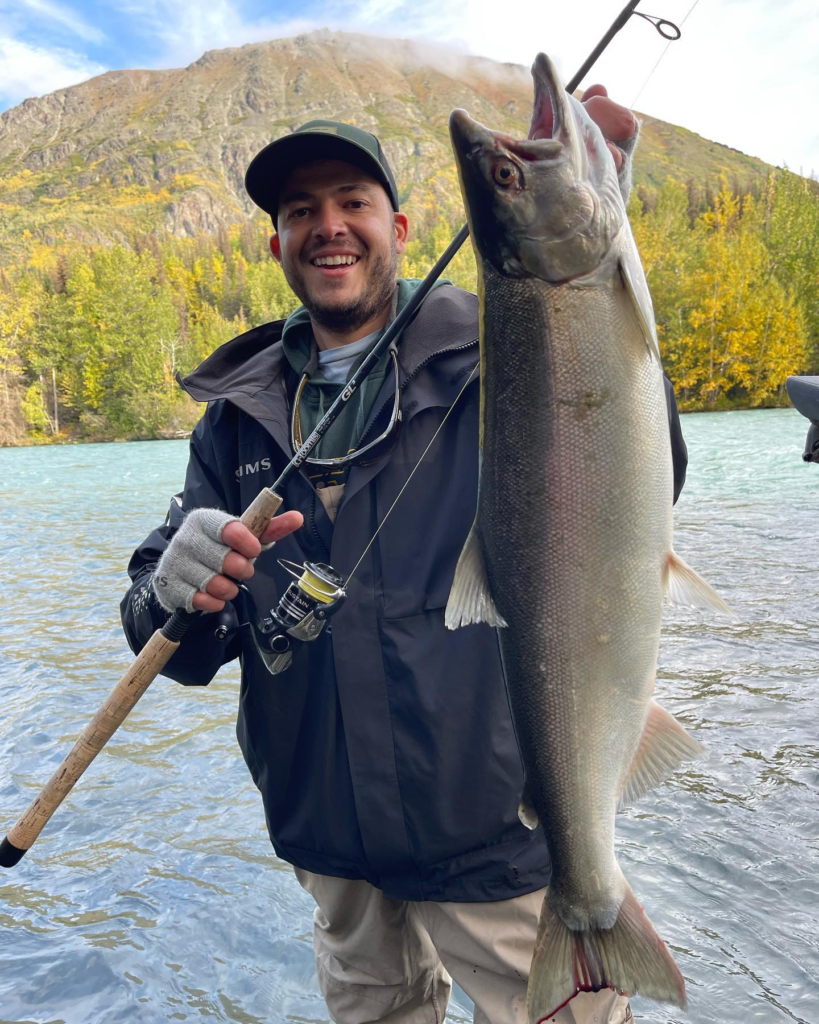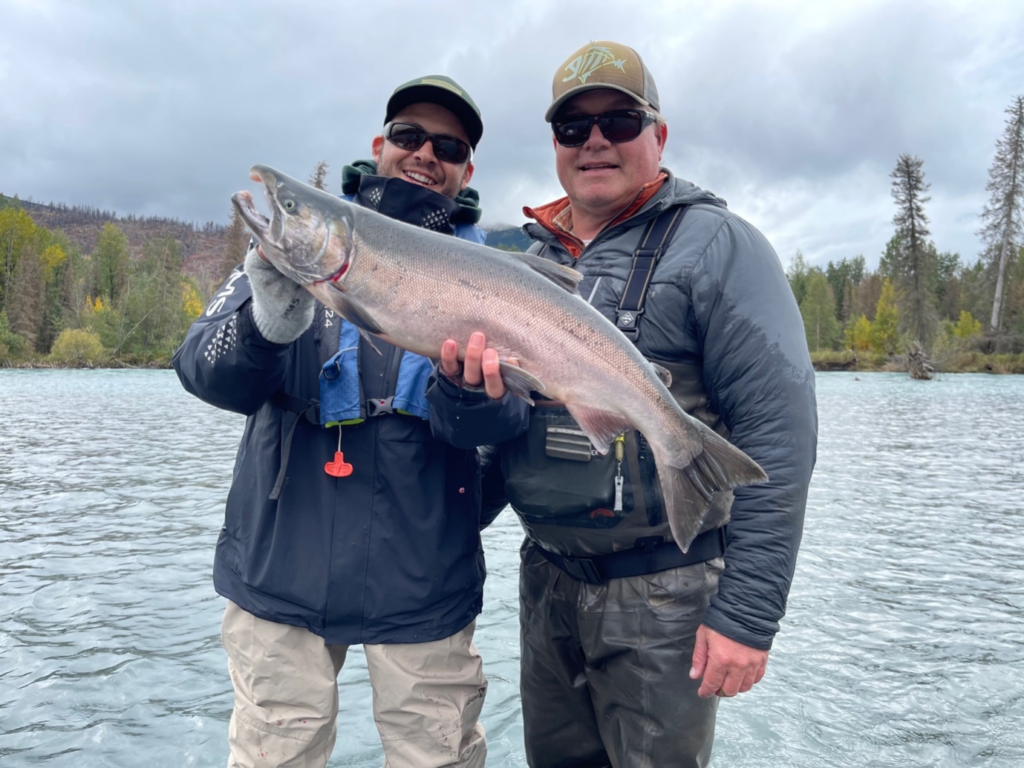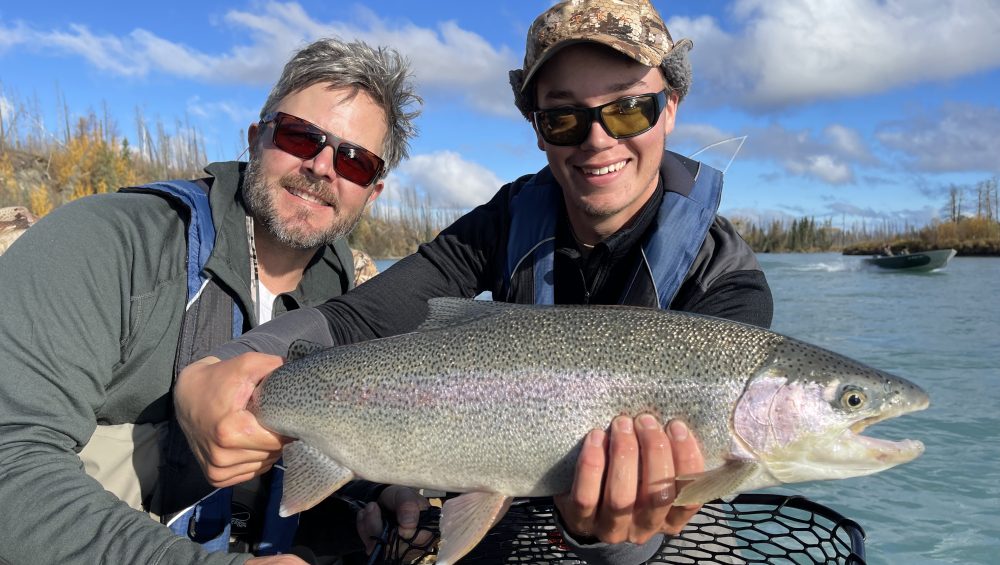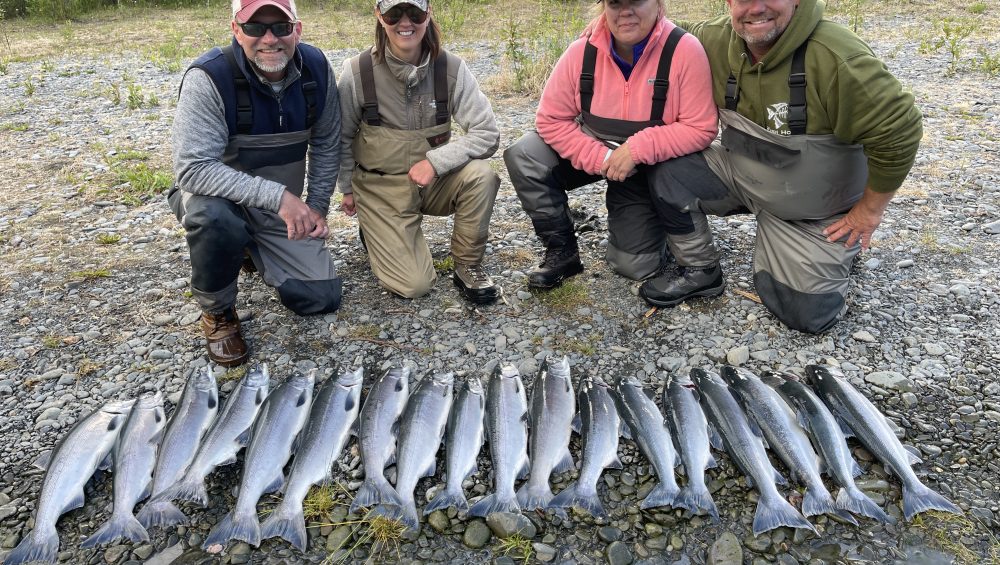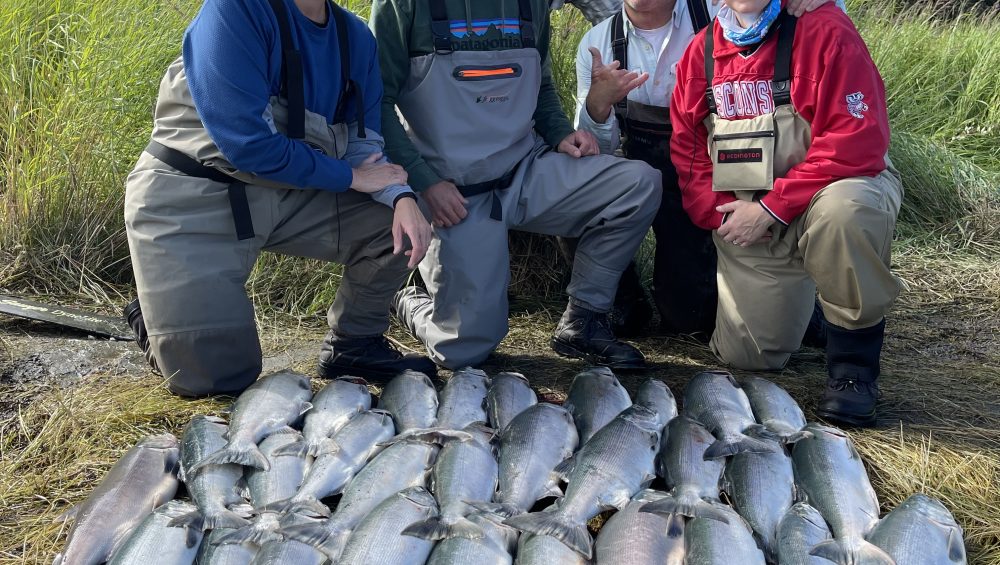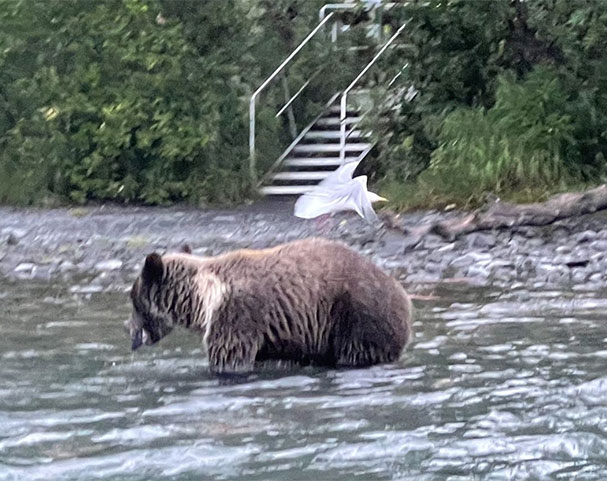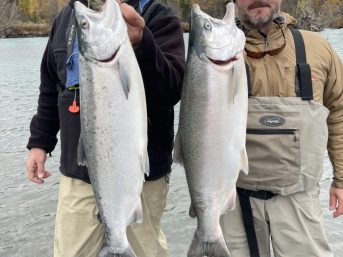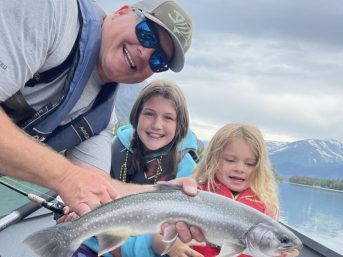As the leaves begin to turn and the air takes on a crisp autumnal bite, the Kenai River beckons anglers from around the world. September, with its peak silver salmon run, is a prime time to experience the thrill of reeling in these magnificent fish against the backdrop of Alaska’s stunning wilderness. But before you cast your line into these pristine waters, it’s important to be prepared.
This comprehensive checklist will equip you with everything you need to know to ensure a successful and enjoyable guided fishing trip on the Kenai River. With our expert guidance on essential gear and clothing to licenses and safety considerations, we’ll cover all the bases so you can focus on what matters most: landing that trophy salmon.
The Guided Advantage: Hassle-Free Salmon Fishing
When you choose a guided fishing trip with Jason’s Guide Service, you’re opting for a seamless and stress-free experience.
From the moment you join us, you’ll be surrounded by top-of-the-line fishing equipment, meticulously chosen for the Kenai River’s specific conditions and target species. Our experienced fishing guides, passionate about sharing their knowledge and love for the sport, will be by your side, offering expert instruction and ensuring your comfort and safety throughout the trip.
We provide everything you need, from rods and reels to flies and artificial lures, carefully selected to maximize your chances of success. Our guides’ intimate knowledge of the river’s prime salmon fishing spots and their keen understanding of fish behavior will put you in the heart of the action.
Essential Fishing Gear (For the Curious)

While we take care of all the gear on our guided fishing trips, we understand that some anglers prefer to bring their own equipment or are simply curious about what the pros use.
If you fall into this category, here’s a breakdown of the essential gear for a successful Kenai River fishing trip:
- Rod and Reel: Opt for a medium-heavy to heavy-action rod paired with a matching reel equipped with a smooth drag system. This combination provides the power and control needed to handle the strong runs and acrobatic leaps of silver and sockeye salmon.
- Line: Choose a line that balances strength and sensitivity. Braided line is a popular choice for its thin diameter and exceptional strength, allowing for longer casts and better feel. Monofilament line offers a bit more stretch and forgiveness, which can be beneficial for anglers who are still honing their skills.
- Flies, Beads, and Nymphs: These are the go-to choices for targeting silver salmon on the Kenai River, mimicking the natural food sources these fish are attracted to. Experiment with different patterns, colors, and sizes to discover what works best on any given day.
- Tackle Box or Vest: Keep your gear organized and easily accessible with a tackle box or vest. This will help you stay focused on the fishing and avoid wasting time searching for misplaced items.
- Landing Net: A landing net is essential for safely landing and releasing your catch, especially larger salmon. Choose a net with a rubberized mesh to minimize harm to the fish’s scales and fins, promoting their healthy release back into the river.
By understanding the essential gear and embracing the guided advantage, you’ll be well-prepared to embark on a successful and enjoyable silver salmon fishing adventure on the Kenai River.
Licenses and Permits
Before you cast your line into the Kenai River, make sure you have the necessary licenses and permits.
An Alaskan fishing license is required for all anglers, regardless of age or residency. These licenses can be purchased online, at local sporting goods stores, or through authorized vendors.
Safety Essentials
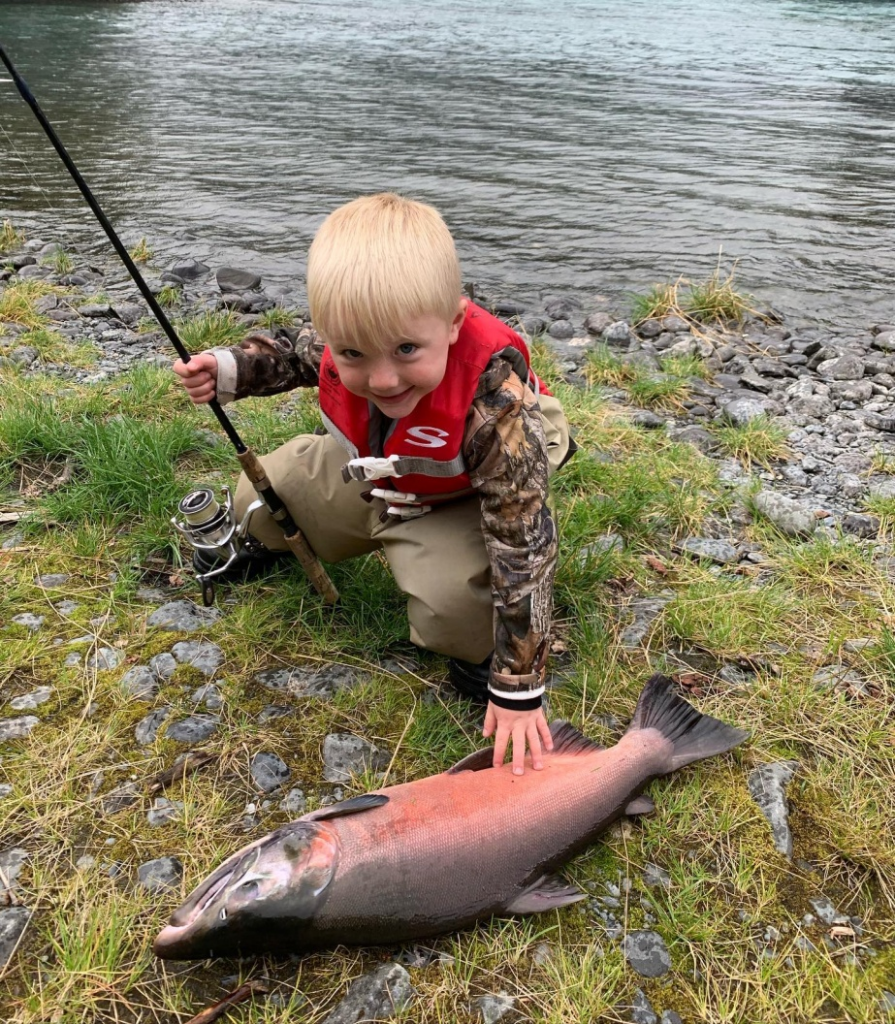
Safety should always be a top priority when venturing into the Alaskan wilderness. The Kenai River, while beautiful, can also present challenges, from swift currents to unpredictable weather.
Always wear a properly fitting life jacket while on the water, especially in a boat or when wading in deeper sections of the river. At Jason’s Guide Service, we provide life jackets to all of our guests.
A basic first-aid kit is also essential for treating minor injuries or insect bites that may occur during your trip. Pack it with essentials like bandages, antiseptic wipes, pain relievers, and insect sting relief. We take care of this for you.
Additional Items to Consider
While the essentials covered above will ensure you’re well-equipped for a successful fishing trip, a few additional items can enhance your comfort and overall experience on the Kenai River:
- Camera: Capture the stunning scenery, the thrill of the catch, and the memories created with friends and family with a waterproof camera or a phone case.
- Sunscreen and Sunglasses: Protect your skin and eyes from the sun’s harmful rays, even on cloudy days. The reflection off the water can intensify the sun’s effects, so adequate protection is crucial.
- Snacks and Drinks: Pack plenty of water and snacks to stay hydrated and energized throughout the day. Fishing can be physically demanding, and proper nourishment is key to maintaining stamina and focus.
- Waterproof Bag: Keep your valuables, electronics, and extra layers of clothing dry in a waterproof bag. The Kenai’s weather can be unpredictable, and a sudden rain shower can quickly dampen your spirits if you’re not prepared.
Let’s Get Started!
Preparing for a fishing trip on the Kenai River requires careful consideration of gear, clothing, and safety essentials. By following this checklist and packing thoughtfully, you’ll be well-equipped to tackle the challenges and embrace the rewards of a guided silver salmon fishing experience in this stunning Alaskan wilderness.
At Jason’s Guide Service, we strive to make your Kenai River experience as seamless and enjoyable as possible. Our guided fishing trips take the hassle out of planning and preparation, allowing you to focus solely on the thrill of the catch. We provide all the necessary gear, including top-of-the-line rods, reels, and tackle, as well as comfortable drift boats and expert guidance from our seasoned Kenai River salmon fishing guides.
Whether you’re a seasoned angler seeking a trophy silver salmon or a novice looking to experience the magic of silver salmon fishing in Cooper Landing, we offer a variety of trips to suit your needs and skill levels.

